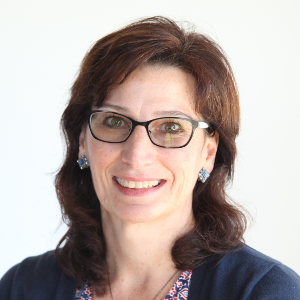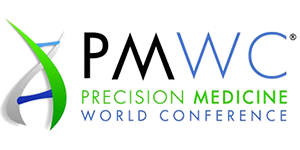
23 Sep An Interview with Theresa LaVallee, Parker Institute for Cancer Immunotherapy

Dr. LaVallee is Vice President of Translational Medicine and Regulatory Affairs at the Parker Institute for Cancer Immunotherapy. She has broad knowledge and expertise in the area of discovery and development of drug candidates, as well as in the field of Translational Medicine enabling her to guide science driven development decisions and implement effective use of biomarker assays in clinical studies. Read her full bio.
Interview with Theresa LaVallee, Parker Institute for Cancer Immunotherapy
Q: Immunotherapy is redefining how we treat cancer. How is this treatment approach impacting healthcare and in particular individualized medicine?
A: Over the last couple of decades, we have been able to improve oncology treatment for late stage cancer patients. We have been able to treat those patients with chemotherapy, or targeted therapy, and improve their life spans measured in months. The difference with immunotherapy is that now there is a dramatic shift to being able to achieve long-term survival for some cancer patients, and in some instances cures. And that is transformative in terms of the way we think about cancer. Therefore, I think of it more broadly in terms of how it is impacting different therapeutic areas, and in oncology specifically late stage cancer patients.
For this reason, I believe you cannot lump it all into a single statement! From an individualized medicine perspective, immunotherapy is not there yet in terms of understanding who specifically to treat and with what agent or what combination. That is an area of active research in the field. Therefore, the question for individual medicine: “would you rather apply immunotherapy to certain types of cancers or find subsets of patients across cancer types?”
“The exciting part with immunotherapy is the ongoing explosion of new therapies and treatments.”
The exciting part with immunotherapy is the ongoing explosion of new therapies and treatments – think about the first approval of checkpoint inhibitors in 2011, followed by cellular therapies arriving in 2017, and a dozen new approvals in 2018. For oncology alone, we have seen an astronomical number of immunotherapy-based drug approvals for different tumor types across the board. In 2018, we started to see publications coming out and moving into earlier lines of therapy. Even in the neoadjuvant space, we are seeing a dramatic impact. This was recently demonstrated with Robert Prins Nature Medicine paper, where he and his team looked at a tumor type that is historically viewed as nonresponsive to immunotherapy, which is glioblastoma, an aggressive form of brain cancer. They treated the brain cancer patient before surgery which resulted in significant extension of life expectancy for the patients receiving this PD-1 inhibitor – this neoadjuvant approach of treatment is an emerging area.
Q: Is it realistic to expect immunotherapy to more and more become the standard of care across indications, and if yes what timeframe would you envision?
A: Yes, I believe we are seeing this. Just with the dozen approvals in 2018 alone – it is a constant growth and expansion of immunotherapy. Hence, when you say becoming the standard of care, every day there is a new finding. We are learning more every day, though let us be clear, immunotherapy goes beyond PD-1 inhibitors. It also involves the microbiome, it involves vaccines, and it involves cellular and gene therapy. Just a few weeks ago at the special AACR Immune Cell Therapies for Cancer conference, there was this wonderful talk on using a customized cell therapy approach against a set of antigens in pancreatic cancer showing response. Will it be right for everybody? Probably not 100%. Though as we learn more and more and look at all the different approaches, from drugs, to cell therapy, to microbiome agents, and personalized vaccines, more and more patients may achieve long-term survival benefits based on immunotherapy.
“…immunotherapy goes beyond PD-(L)1 inhibitors. It also involves the microbiome, it involves vaccines, and it involves cellular and gene therapy.”
Q: What is the approach of the Parker Institute to advance the field of immunotherapy? How is it different or similar from an approach taken by an academic, medical, or pharmaceutical organization? Can you illustrate this with an example of a research project you are engaged in?
A: The Parker Institute is truly unique. It is different from a company, it is different from other nonprofit organizations, and it is different from academic and government institutions. The mission that Sean Parker envisioned when he started this institute was to deliver immunotherapy to cancer patients with urgency. This relates to an earlier question: “will more and more patients get immunotherapy?” and yes that is our mission. What is unique about our approach is that we focus on both the science with collaborations as well as access to technology and resources. Fundamentally, the Parker Institute was created to bring people together and not to work in silos, but to share ideas and different capabilities, and therefore bring together collaborative thinking and different expertise. The goal is to not have one finding come from one lab, but have multiple findings come from across multiple labs so that you get that reproducibility up front. The collaborations are with academic institutions, commercial companies, and various different technology companies – it is across the board.
A good example would be the trial that we just presented at AACR on pancreatic cancer, with the principle investigator of the study being Bob Vonderheide from the University of Pennsylvania whose preclinical findings with anti-CD40 antibodies was the science that informed the design of the clinical study. The Phase 1b clinical data presented demonstrated that a combination of four drugs – two chemotherapy drugs with an anti PD-1 antibody, followed by a CD40 agonist antibody, which were all scheduled on different days (not commonly done) – resulted in encouraging anti-tumor activity. We were able to efficiently translate the preclinical findings into the clinic and to do this, we brought together seven different academic institutions, two pharma partners, BMS and Apexigen and the non-profit Cancer Research Institute. As a group, we were able to bring the study to the clinic and enroll the patients in a very short period of time.
The Parker Institute is also very realistic and accepting that not everything will work. This is different from typical pressures in an academic environment where you are constantly looking for funding, or in companies where you are looking at time to market and shareholder value. In these settings, the acceptance of failure is usually not well tolerated while here at the Parker Institute, with having a bold idea that is creative, it is okay for it to not work as long as you learn from it. This is quite a different aspect compared to other places I have worked at before. We aim to understand why our hypothesis was correct or not and to try to learn from it and build on the learnings.
Q: What are some of the biggest challenges we need to overcome to make cancer immunotherapy a successful treatment option for everyone? How will we get there and is it feasible from a cost-perspective?
A: Yes, I believe there are lots of ways immunotherapy is disrupting the way that we approach cancer treatment. One of last year’s approvals was a tumor agnostic biomarker which means the treatment is based on the molecular feature and not based on the anatomical location of the tumor. That is a first!
“The real challenge is figuring out who to treat and with what agents.”
The real challenge is figuring out who to treat and with what agents. There are CAR-T based therapies that cure some people, PD-1 or PD-L1 targeted antibodies that cure some people, or CTLA-4 targeted antibodies that cure some people, but it is still a minority of people that are cured. So, whether to treat with a single agent versus a combination, or which therapeutic modality to give a cancer patient is a question that is not simple for a personalized health care approach. Typically, genetic alterations drive the tumor: either there is a gene amplification or a mutation that results in the cells having uncontrolled growth. Matching the drug that inhibits that altered gene has shown that treatment results in improvements in survival, but not generally cures. When we look at immunotherapy, we have a complex immune system with a number of different cell types, as well as the tumor playing a role in escaping immunotherapy. Therefore, thinking about the diagnostic space that is looking at multiple different cell types with multiple different technologies that sheds light on whether it is a genetic alteration, a protein change, a cell change, a bacteria composition of your gut microbiome, or a composite of those factors that drive tumorigenesis is important. Figuring out how we could test patients with a multi-parameter test or an algorithm that could define who to treat with what agent(s) is the biggest challenge that we need to overcome. I believe, it is going to take some creative approaches to achieve this. Furthermore, if the tests have multiple analytes to be screened for, that will add to the cost side of the equation. Ultimately, the people that you treat should see a long term benefit, and while we often hear the complaints about how expensive these agents are, some of these patients that are coming on these trials have already had seven lines of treatment. While the individual cost of one of those lines of therapy may not have been large, but when you multiply it by seven, it is a real number.
“I believe, you have to look at the total cost of care and then the survival benefit that is afforded, only that way can we really figure out the economics of it.”
The Parker Institute is accelerating treatments for cancer patients. The trials we are doing, are early stage trials. After a successful trial, we will look to the drug company to take it to market. We also work with some diagnostic companies that have novel approaches to look at enhancing treatment with immuno-oncology agents.
Q: As of now, for many indications only a minority subset of patients within a large cohort responds favorably to the treatment. This issue is concerning and becomes a challenge for immunotherapy to improve effectiveness and patient response rates. What are your thoughts?
A: There are many people who kind of poo-poo immunotherapy saying, “Ah, it’s only helping a few.” My question to them is, “how is that different from conventional chemotherapy?” Looking at late stage cancer treatment data, the chemotherapy response rate is about a 20 to 30%. The difference with immunotherapy is that some of the treated patients have complete responses and long-term survival and it also works across a number of different tumor types with and without chemotherapy. Therefore, I think the focus that it only helps a few is not accurate because the benefit is large.
Q: What will next generation immunotherapies to treat cancer look like? Where is the field heading?
A: This is an exciting time, and we have to be careful that we don’t equate immunotherapy with checkpoint inhibitor type approaches only. Cellular therapy is an incredibly exciting space, whether it is cellular gene therapy or, as I mentioned earlier cell-based therapies. Some exciting data were presented at ASCO on cell-based therapies and also at the AACR meeting that I just mentioned earlier with the pancreatic cancer study. Neoantigen vaccines are coming of age and microbiome treatment is really starting to show transitions into the clinic, and this is a completely new modality to the oncology sector. Therefore, the range of immunotherapy-based treatments is quite large, and this has to be evaluated in conjunction with trying to understand the science of the disease better and figuring out which of the aforementioned approaches to use, and in what combinations. My wish for the next generation of immunotherapies is that we understand better what the patient specific disease looks like and match the chosen therapies better with the patient.
Q: Where do you see other modalities such as cancer vaccines (traditional approaches, personalized cancer vaccines, etc.) or cell-based therapies make most of an impact?
A: I believe they are related with the checkpoint inhibitors in terms of the fact that the patients who benefit do terrific. And if we could understand the biology of the patient’s tumors who don’t have good T-cell infiltration and lack T-cell fitness to mount the critical anti-tumor immunity, then that would impact the outcome significantly. The problem with cell therapies in solid tumors such as the CAR T-cell based approaches is how do we get a good T-cell infiltrate in solid tumors, and then have them stay active and be able to kill the tumor? This is a similar situation to what we are trying to overcome with the patient’s own T-cells by adding checkpoint inhibitors.
For vaccines, it is a similar approach. We are trying to activate the immune system and the T-cells, but they need to be in the tumor and demonstrate the ability to mount the anti-tumor response. I am a translational medicine person, so I am always focused on the biology of what will help to get a better immune response in the tumor. It also includes the tumor microenvironment (TME) and understanding the mechanisms of immune suppression and resistance.
Q: What is required to make breast cancer more amenable to immunotherapy? Do you believe an immunotherapy-like approach to treat breast cancer more broadly is in the future?
A: We just saw the first approval for an immunotherapy drug for triple negative breast cancer in combination with chemotherapy. The approach we are taking – in collaboration with Beth Mittendorf and a number of other investigators and non-profits – is via a biomarker study, based on the approval of atezolizumab, an anti-PD-L1 agent. We will collect tumor, stool, and blood from patients who are getting standard of care treatment to try to learn better from those patients who respond versus the ones that do not respond. The idea being, that based on the learnings, we can broaden the application of immunotherapy to breast cancer. Laura Esserman with her I-SPY Trials is doing something very similar with her deep molecular analysis approach to better understand the biology of breast cancer.
Q: What else is important in the context of where we are in accelerating adoption of immunotherapies? Where do you see relevant themes in the context of the upcoming PMWC 2020 Silicon Valley conference? • What are you expecting PMWC attendees will walk away with from the PMWC 2020 Silicon Valley conference? • What call to action should we as a community focus on? • What are some of the PMWC 2020 talks everyone should attend and why?
A: Over the last couple of years PMWC has done a great job touching on the various aspects of immunotherapy and therapies that we just discussed.
- Emerging therapeutics as well as platform companies have been well represented.
- The focus is on biomarker technologies and different approaches of biomarker identification and development.
- Data analytics aspects have been called out which are critical and a bottleneck in the field – being able to analyze multi-omics data can be very challenging.
- Furthermore, looking at the various components of bringing a diagnostic or therapeutic from discovery to market, including reimbursement aspects is well covered.
- Looking at real world data and various aspects from the patient angle, and not just a drug development perspective is achieved.
All in all, PMWC Silicon Valley it is a unique conference with its multi-track approach that really holistically, from early discovery through marketing looks at what it takes to get a therapeutic drug candidate to patients.
”The call to the community is to be bold, and to think differently about novel approaches which includes collaborative science, sharing data in pre-competitive areas, and advance science with urgency!”
The call to the community is to be bold and to think differently about novel approaches which includes collaborative science, sharing data in pre-competitive areas, and advance science with urgency! I really appreciate and enjoy the opportunity to be part of the Parker Institute with its novel approaches and cutting edge science. In bringing together multiple stakeholders from industry, from academia, from the regulatory side, from nonprofits, and in saying what can we do as a group to answer challenging scientific questions.






